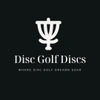An amusing aspect of disc golf is that although all discs technically work for all throwing styles, some are more effective for forehand throws than others.
There are two primary throwing styles in disc golf: the backhand and the forehand. The forehand throwing motion resembles a tennis forehand stroke, where the palm faces forward towards the target. This disc golf motion is also known as a sidearm throw or a flick. It’s called a sidearm due to its similarity to a sidearm throw in baseball, while the term flick describes the wrist’s flicking motion during the disc’s release.
While most players find the backhand style more natural, mastering the forehand can save numerous strokes on the course. The way golf discs curve or fade in the direction of their spin makes having both backhand and forehand throws beneficial, allowing you to curve the disc as desired.
What’s the best forehand disc you’ve used so far? If you haven’t found one yet and are searching for the top discs for forehand throws, you’re in the right place!
Different discs perform better for forehand throws, and some discs do better than others in a different plastic grade. Our carefully reviewed roundup arms you with top-tier forehand discs, each excelling in its category—for 2024.
Best Forehand Disc Comparison Table
| PRODUCT NAME | FLIGHT RATINGS | BEST FOR | LEVEL OF PLAYER |
| Prodiscus Jokeri | Speed: 4.0 Glide: 3.0 Turn: 0 Fade: 3.0 |
Approach Shots | All |
| Dynamic Discs Justice | Speed: 4.0 Glide: 4.0 Turn: 0 Fade: 3.5 |
Hyzer Approach Shots | Intermediate and Advanced |
| Discraft Buzzz | Speed: 5.0 Glide: 4.0 Turn: 0.0 Fade: 1.0 |
Straight line mid range shots | Everyone |
| MVP Volt | Speed: 8.0 Glide: 5.0 Turn: -0.5 Fade: 2.0 |
Straight throws for narrow and long fairways | Beginner and Intermediate |
| MVP Tesla |
Speed: 7.0 GLIDE: 5.0 Turn: 0 Fade: 2.0 |
Stable Distance and Approach Shots | Intermediate and Advanced |
| Infinite Discs Scepter | Speed: 9.0 Glide: 3.0 Turn: 0 Fade: 4.0 |
Control driver and forehand approach shots |
Intermediate and Advanced |
| Infinite Discs Pharaoh | Speed: 13.0 Glide: 5.0 Turn: -1 Fade: 2.0 |
Maximum Distance Forehand Throws |
Beginners, Intermediate, and Advanced |
Best Sidearm Disc Reviews
Forehand Putter Disc
1. Prodiscus Jokeri Putt and Approach Disc
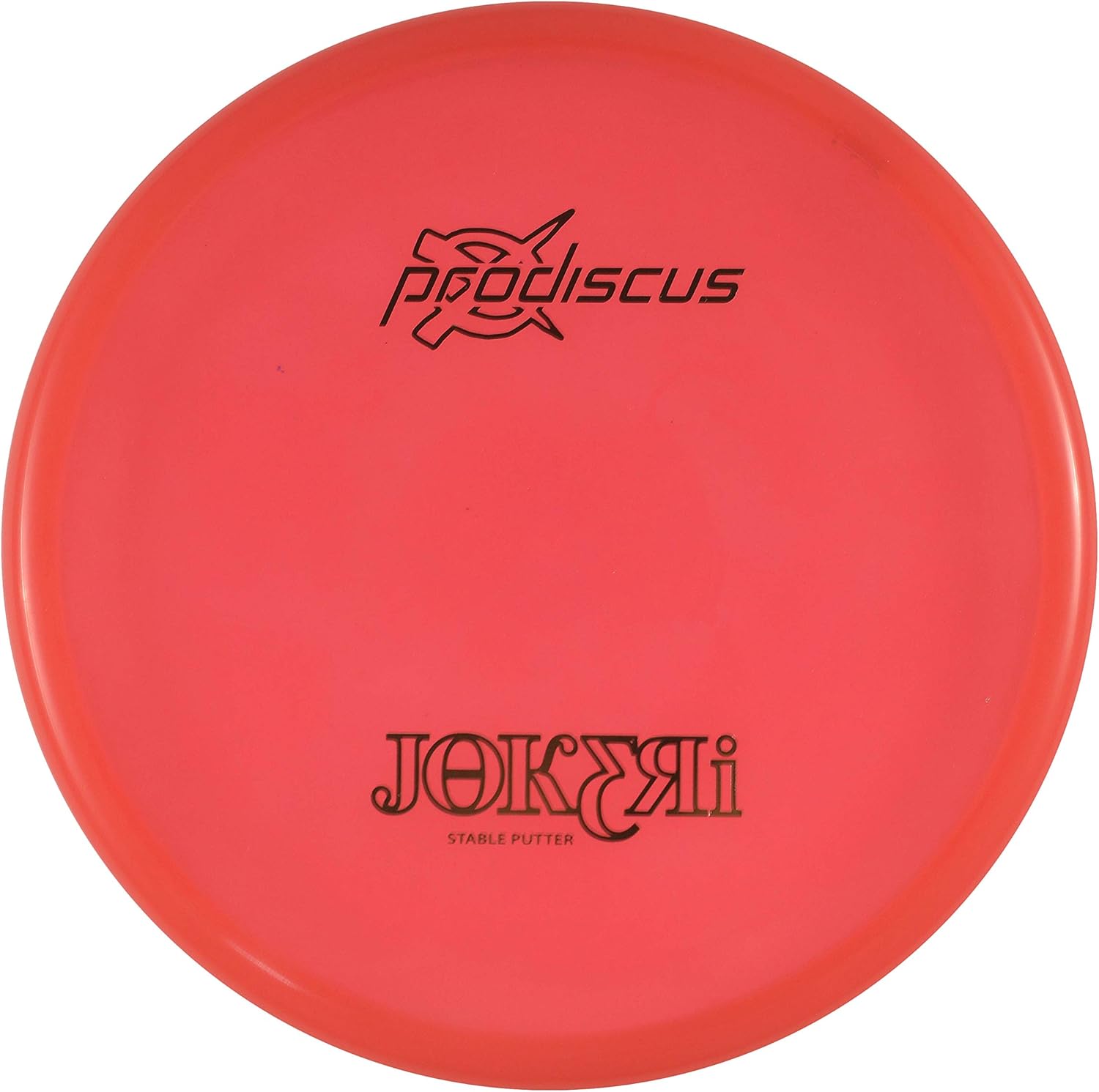
No one I know uses a forehand throw for putts, yet having a reliable forehand approach disc in your bag is crucial. The Prodiscus Jokeri stands out for forehand approach shots. Kevin Jones, a top pro in the sport, really put the Jokeri on the map with his killer forehand shots.
The Jokeri forehand approach disc is more than just aesthetically pleasing; it delivers excellent performance in the field. When compared to more well-known brands, the Jokeri closely resembles the Discraft Zone. It’s a fairly deep putter with a relatively wide diameter and a flat top, which feels comfortable in the hand and ensures consistent releases.
The flight ratings for the Jokeri are 4/3/0/2. With sufficient power, it flies straight, doesn’t turn out of your hand, and consistently finishes with a slight fade. Its stability ensures the Jokeri won’t turn over on high power throws. It’s not overly glidey, which is ideal for an approach disc – you aim to land near the basket rather than overshoot it.
When thrown with an anhyzer release angle in my forehand throws, the Jokeri tends to move left but, due to its overstable nature, flexes back and fights out of the release angle.
Conversely, when thrown with a Hyzer release, the experience is quite the opposite due to its lower glide. It maintains the release angle and gradually drifts in that direction.
The Jokeri is one of those discs frequently thrown more with a forehand than a backhand, as it resists turning while still providing a straight flight. But it’s not just a forehand favorite; the Jokeri also shines when used for precise backhand approaches.
So, if you’re hunting for a disc that’ll give your forehand shots consistent stability and straight flight, the Prodiscus Jokeri should be your go-to.
PROS
- Great for forehand approach shots
- Performs well with anhyzer flex shots and hyzer shots
- Ovestable disc; does not easily flip
- Reliable fade
- PDGA Approved
CONS
- Not a lot of color or plastic options.
Forehand Mid Range Discs
2. Dynamic Discs Justice Midrange
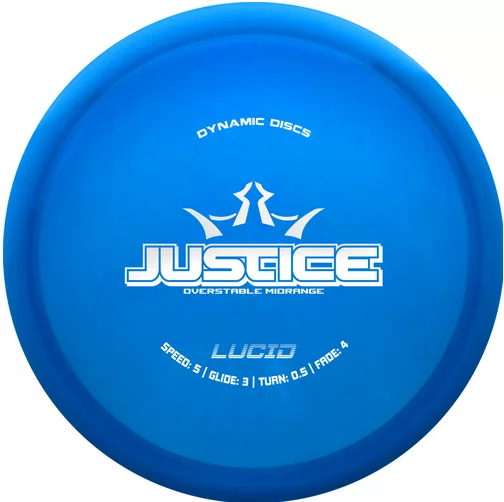
While technically classified as a midrange disc, the Dynamic Discs Justice isn’t designed for distance. As the original “super overstable” mid, it has inspired many imitators, but I believe it remains the best. It’s the most reliable disc golf disc for forehand approach shots, especially when there’s room for a left-to-right fade.
The Justice can be likened to a dump truck in its behavior. Its extreme overstability means it starts fading as soon as it’s released and reliably spikes into the ground. With a small diameter, low profile, and completely flat top, it’s ideal for consistent forehand releases. When the wind picks up, you’ll want this disc in your bag; its ability to cut through gusts is unmatched.
The DD Justice is designed with a large bead at the bottom of the rim, subtle yet allowing for comfortable releases. One of its notable attributes is that, owing to its overstability, it spikes sharply to the ground rather than fading slowly.
When thrown at a hyzer angle, the Justice hardly strays from its path, quickly rising and dropping. This disc won’t flip, regardless of the thrower’s form or power. However, due to its overstability, it is not recommended for beginners.
Throwing the Justice on low power forehand flex shots is particularly enjoyable. If released at an anhyzer angle, it can curve left around one obstacle, then right around another, enabling navigation through multiple angles.
In my view, the Justice, or a similar super overstable mid, is indispensable for forehand approach shots.
PROS
- Great for mid range forehand throws
- Reliable fade and stability
- Very overstable golf disc
- Can be thrown in the wind or during non-windy situations
- Smooth edge and good grip
- PDGA Approved
CONS
- Not recommended for beginners
3. Discraft Buzzz

The Discraft Buzzz is another excellent forehand midrange disc. It boasts a great feel and a perfectly flat top. Unlike the Justice, the Buzzz is ideal for achieving dead straight shots. While I can’t throw the Buzzz at full power, it excels in smooth control sidearm shots, flying dead straight.
Despite having tried a wide array of golf discs to match my game, I still explore different types that are suitable for beginners. The Discraft Z Line Buzzz is one such midrange disc, particularly effective for beginners struggling with fade. The Buzzz is molded from Discraft’s Elite Z Plastic, renowned for its long-lasting build and striking hues that really pop.
When you’re tossing forehands, the Buzzz is a real game-changer; it offers a consistent trajectory with just a touch of fade at the end—perfect for newbies dialing in their throw. It flies straight and covers a decent distance. In my experience, it’s best used for distances between 100 to 200 feet. The Buzzz allows beginners to throw smoothly at their own pace.
The good news is, the Buzzz doesn’t require hard throws or high arm speed. The Buzzz flies straight and smooth, making it easy to control for beginners learning forehand and backhand throws. For newcomers to the game seeking a top-notch forehand disc, the Buzzz stands out as an exceptional pick.
Intermediate players will also find value in this disc. I recommend trying it with anhyzer shots to see how it drifts slowly and provides good touch shots. Although it’s an understable disc, it can fly straight and flatten out effectively. In wooded areas or courses, the Buzzz’s performance and flight path are particularly useful. The Buzzz won’t demand high-speed throws to excel; your technique is what really counts, so keep it chilly and focus on form.
PROS
- Ideal disc for beginner and experienced players
- Doesn’t need to be thrown hard or at a high speed
- Easy to control and flys straight
- Can be used for both forehand and backhand throws
- Great for throwing in wooded areas or courses
- PDGA Approved
CONS
- More expensive than other brands of discs.
Forehand Fairway Driver Disc
4. MVP Volt Driver
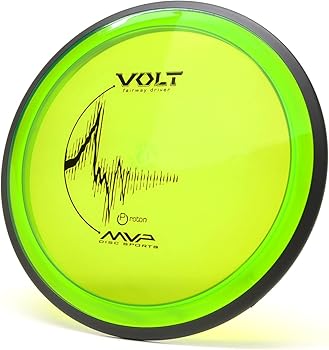
The Volt has a nice flat top which works well for me for forehand throws. I’m not sure if the MVP Gyro technology actually does anything, but this disc does a good job at staying stable at high speeds while having minimal fade at the end of the flight.
My preferred choice of plastic for the Volt is Proton Plastic, it is engineered to withstand the roughest conditions like windy days and wooded courses while looking cool in transparent candy colors. It is highly durable and can last long. Just like the other golf discs on our list, this one’s PDGA Approved as well.
The beadless design is also an advantage if you are aiming for low ceiling shots. I like how the bottom is smooth, making it reliable in tight fairways and wooded courses without easily getting caught up in any objects or obstructions throughout its flight path. Moreover, the GYRO technology does a great job to exhibit penetrating fade that can work on extensive and narrow fairways. This makes it suitable for long and precise placement shots.
This stable disc can maintain the line very well. I’ve tried using it in a wooded course and it performs well and can even fly past 350 feet. This MVP disc can take good flight around narrow fairways and trees with a bit of hyzer.
Surprisingly, it is consistent and can fly back to where I want it to be, making it a reliable workhorse disc even when I use it in windy conditions. It does not easily turn over and rather holds a very straight flight right before it goes on a slightly downward angle.
Overall, I find it a nice finesse disc that everyone can give a shot and include in their bags. And if you are working on stepping up your game and switching from midranges to drivers or fairway drivers, I also recommend trying this disc out on your next game.
PROS
- Great to use for low ceiling shots
- Ideal for intermediate players
- Good for straight shots on wooded courses and narrow fairways
- Designed for long and precise placement shots
- Comfortable to throw backhand or forehand
- PDGA Approved
CONS
- Not the best in the wind
Forehand Control Driver Discs
5. MVP Tesla

The MVP Tesla serves a similar role to the Volt in a disc golfer’s arsenal but stands out with its increased overstability. Like its counterpart, the Volt, the Tesla is characterized by a very flat top, a feature that many players appreciate for its consistent release behavior.
Available in a variety of plastic blends, the Tesla caters to different preferences and playing styles. For forehand throws, my personal favorites are the Neutron and Proton plastics. These plastics hit the sweet spot, giving you that just-right mix of toughness and a steady hold, so your disc flies true throw after throw.
The Plasma plastic variant is another option, known for its slightly enhanced grip. This can be beneficial for players who prefer a more tactile feel during their throw, though it may alter the release dynamics slightly compared to the Neutron and Proton plastics.
The Fission plastic introduces a lighter weight option to the Tesla lineup. Discs in this blend typically exhibit a bit of dome, which can affect the disc’s aerodynamics. The dome can make the disc fly differently. Players who prefer a lighter disc for easier speed generation or those dealing with specific course conditions might find the Fission blend particularly suitable.
For players chasing a disc that delivers unwavering stability in flight and boasts a sleek, flat top for precision throwing, the MVP Tesla emerges as an exceptional choice. The Tesla’s variety in plastic types means there’s one for every disc golfer, enhancing your game by matching your style and technique.
PROS
- Versatile disc that can be used for forehand and backhand throws or flexes and hyzer shots
- Consistent disc that delivers reliable fade
- Excellent control or fairway driver
- Ideal for intermediate and advanced players
- Lends a very comfortable grip
- PDGA Approved
CONS
- Beginners can give it a try but might need to get a hang of it
6. Infinite Discs Scepter
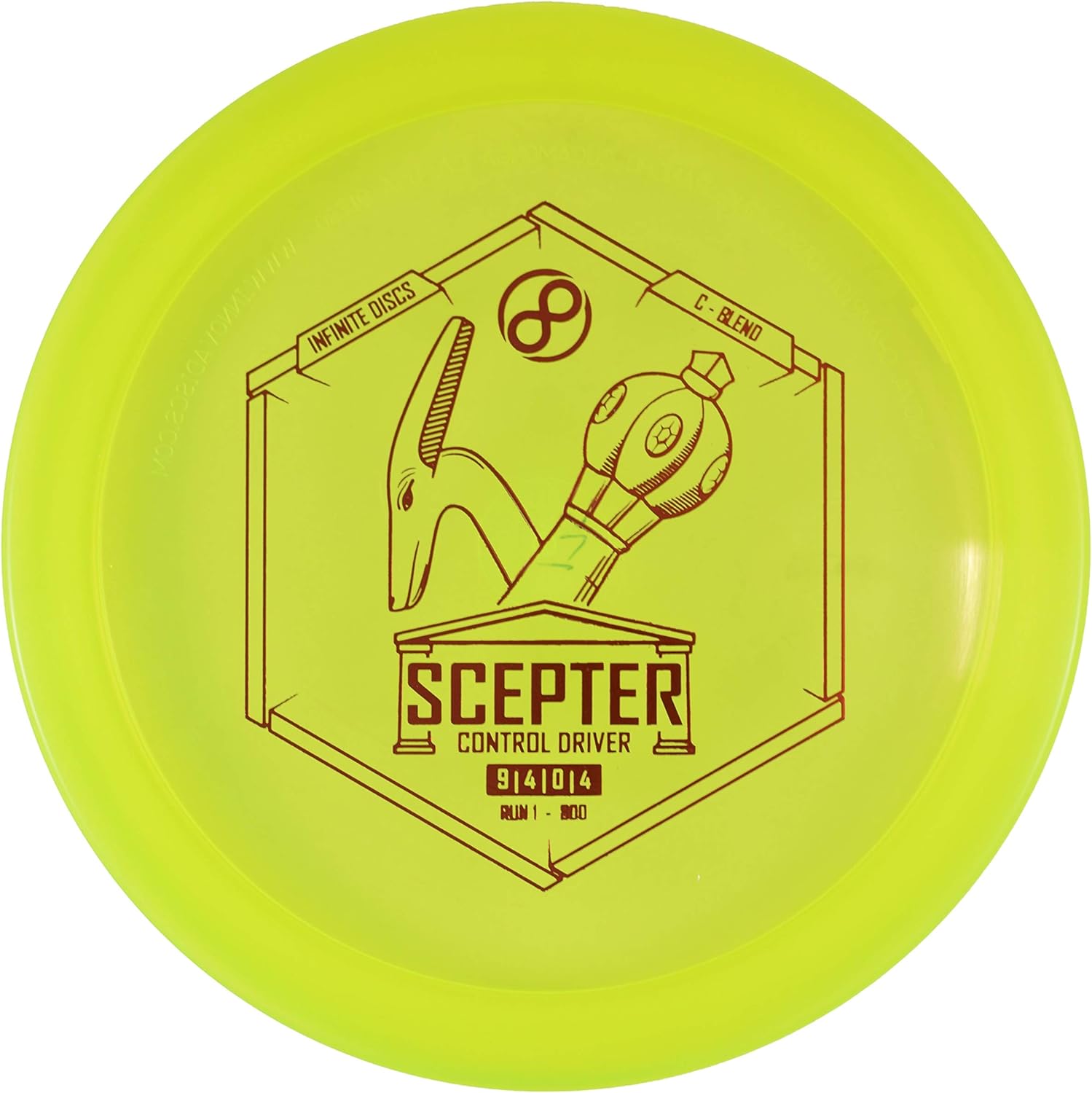
The Scepter by Infinite Discs, much like Innova’s top forehand choice—the Firebird—shines when you need a disc that’ll stick to your forehand lines with precision. Produced by Innova Champion Discs, the Scepter is essentially an Innova Firebird, which is renowned as Innova’s #1 forehand disc. It uses the same mold as the Firebird but undergoes a flat-topping process to ensure consistent flatness. As I often mention in my forehand disc reviews, a flat top is essential for my forehand throwing style.
Pro players swear by the Scepter for its top-notch game, and it’s officially recognized by the PDGA—no wonder it’s a go-to for forehand shots. Grasping the Scepter feels natural and secure, which really steps up your game when you’re aiming for that perfect throw.
As a forehand distance driver, the Scepter is an overstable golf disc that achieves reliable fade while maintaining adequte distance. Much like the Firebird, the Scepter excels in speed and stability, which shines when you’re facing gusty conditions and need a throw that won’t falter.
With the Scepter in hand, you can confidently execute drives that cut through gusts with spot-on accuracy. However, it requires intermediate arm speed and may not be the most beginner-friendly option. It’s not suited for players with low arm speed and requires some power. But if you’ve been improving your speed and arm strength, the Scepter is an excellent choice.
The Innova disc stands out for its adaptability, shining with both forehand and sidearm throws, a real asset for players looking to diversify their game. This disc shines when you’re playing skip shots, nailing those forehand approaches, or cutting through a tough headwind. Its efficiency even extends to hyzer lines, where it proves to be quite dependable.
I also use the Scepter it on a wooded courses, where navigating through trees can be challenging. The predictable flight and overstable nature make this disc a dream, cutting through trees with ease. If you’re in need of a disc that can help you navigate tricky situations, or you require a disc with hook or skip potential, then adding this Infinite disc to your bag should be a priority.
PROS
- Great to use in windy conditions or headwinds
- Ideal for skip shots, hook, and forehand drives
- Comfortable grip and feels nice in the hand
- Has a smooth release and dependable fade
- PDGA Approved
CONS
- Requires intermediate arm speed
- May not be suitable for beginners
Forehand Distance Driver Disc
7. Infinite Discs Pharaoh

If increasing distance on your forehand drives is your goal, the Infinite Discs Pharaoh is the disc to try.
The Pharaoh comes in various plastics, but for my forehand drives, I favor the max weight Swirly S-Blend. This blend is slightly harder than other varieties, enhancing its stability and smoothing the release.
Unlike my other recommended sidearm discs with completely flat tops, the Pharaoh features a slight dome. The slight dome on the Pharaoh isn’t just for show; it catches more air, giving you that extra distance when you’re aiming to really launch it out there. While I don’t achieve the same control with the Pharaoh as I do with discs like the Tesla or the Scepter, it’s my go-to for an extra 50 feet in open fields. On good forehand throws, I can reach about 350 feet with the Pharaoh.
When thrown flat at full power, the Pharaoh flips to the left for roughly 250 feet before starting to fade back to the right, achieving a max distance S-Curve flight. Due to its slight understability with high power, this disc is not optimal for headwind throws.
Professional disc golfers, including Jessica Weese, also depend on the Pharaoh for their forehand distance shots. Advanced players with significant power might find the Pharaoh a bit sensitive for full power throws, but for those with solid form and a distance under 400 feet, this disc is highly effective.
For anyone seeking to extend their forehand, sidearm, or flick shot distance, the Infinite Discs Pharaoh is a solid choice to try.
PROS
- Great for forehand distance
- Big S-Curve flight path
- Very comfortable wide rim
- Achieves great distance while maintaining good control
- Not very overstable but flies straight and has a predictable fade
- PDGA Approved
CONS
- Might be a little too touchy for big arm players
- Not ideal for headwinds
How to Choose the Best Forehand Disc

Any type of disc can technically be a forehand disc. Each kind serves a purpose and can be thrown backhand or forehand. Basically, there is no such thing as a specific type of disc for forehand, backhand, forehand, or any kind of throw. It does not fall under a particular selection but certain discs are better for forehand shots than others.
Type of Disc
Choosing a forehand disc is not the same as choosing a general disc golf disc for backhand throws. In terms of generalities, my personal preference for forehand discs is discs that they are:
- Flat on the top
- Plastic is not too grippy
- More overstable
Having a flat disc helps me to maintain a more consistent release and more control. When a disc has a dome, my forehand release is not consistent and the disc regularly comes out at an undesired anhyzer angle.
While I prefer grippy plastic for backhand throws, I struggle to throw grippy discs forehand (sorry Kastaplast). Like the issue with domes, “sticky” discs end up staying on my fingers longer than desired and come out too late causing them to drift farther left than desired. I prefer a Champion like plastic or any of the premium MVP blends. Not only are these disc golf plastics more durable, but they are just right for forehand reasons.
Because forehand throws generate more torque and snap it is important to throw more overstable discs. The extra spin generated with the flick release causes discs to “turn over” more easily. A highly understable disc with a high turn rating is likely to turn into an accidental roller on you if you throw it forehand with too much power.
Disc Comfort in the Hand
Since you will be using the golf disc for a forehand throw, you might want to consider the rim of the disc. The forehand throw slides along your index finger. It is very important that the inside rim edge is blunt enough that the disc comes out smoothly and without discomfort.
While most disc golf discs feel moderately comfortable for forehand shots, some are actually painful for me to try and throw forehand. I also find that drivers with less thickness are more comfortable for my hands. The maximum rim width I like to use is about 2.3cm, or up to a 13 speed disc.
Forehand Discs for Beginners
It’s important to note that while some discs are beginner-friendly, others with more stability may suit intermediate or advanced players better. Consider the throw’s purpose, whether aiming for maximum distance, skip shots, or tee-off shots. Depending on the situation, you might opt for an approach putter, a midrange disc, or a distance driver.
Choosing the right disc involves considering factors like skill level and arm power. Beginners still developing their speed should avoid discs requiring high speed. Due to the forehand motion’s nature, the disc’s listed speed isn’t as crucial for sidearm shots as it is for backhand. However, I’d recommend beginners to focus on drivers with a speed of 11 or less.

Know Your Preferences
The discs you vibe with, from the grip to whether they’ve got a bead or not, can seriously impact your game. As you refine your techniques and skills, you might have developed specific likes in terms of width, dome, plastic type, flatness, and whether the golf disc is beaded or beadless.
However, your choices may also largely depend on hand size and form. Choosing the right disc for your game means finding one that sits just right in your grip, aligning with both how you stand and sling it.
Personally, I gravitate towards flat, stable discs for forehand throws as they are less prone to rolling over. Overstable discs are often suggested for players mastering the forehand, as they can help compensate for flaws in technique. Overstable discs can help players learn proper form and technique.
For those seeking a disc that can withstand substantial torque, there are certainly excellent options available. In this context, I typically recommend Champion or similar plastics to prevent the disc from becoming too understable.
Difference Between Forehand and Backhand Discs
The difference we’re discussing is not about the disc itself, but rather the technique or style of your throw. It’s important to note that there are no discs specifically designed for either forehand or backhand. Any type of disc can be utilized for both forehand and backhand throws.
If executed correctly, every disc should function effectively for both backhand and forehand as intended. The way a disc spins varies with each throw due to the underlying physics at play.
Therefore, we recommend the same disc for both forehand and backhand players, especially those who throw at a lower speed. In such instances, the discs are capable of performing well for both types of players.
Frequently Asked Questions
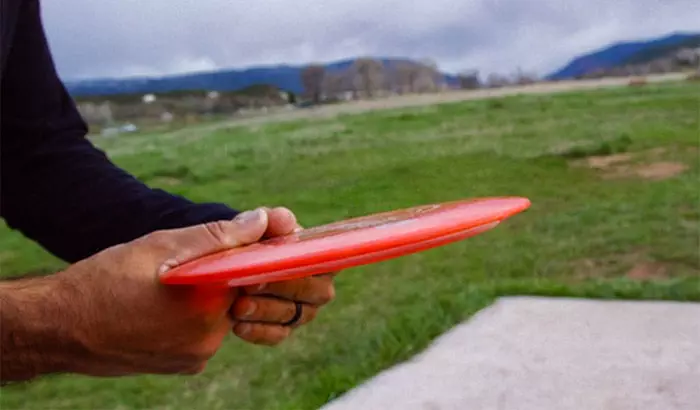
How should You Throw a Disc Golf Forehand?
Every player has their own way of throwing forehand. But as for me, I throw a disc golf forehand or sidearm in 3 ways: the forehand grip, 3-step walkup, and follow through. Your middle finger and index finger will do the trick, with the middle finger placed on top of your index finger when you hold the disc. This is commonly known as the Stacked Grip.
Before throwing, it is important to build momentum. Step on your left first so you can get the momentum forward as you step with your right. As you do this, that’s when you turn the step to get the hips rotated back. As you head to the last and final position, the hips rotate back into your stance. Then, the arm follows the last-placed foot.
Another thing you should always take note of is how you hold the disc properly. One of the biggest mistakes I see with the beginners when throwing forehand is they don’t grip the disc tightly enough. Because of this, the disc comes out of their hand fluttering. Therefore, it is vital to grip the disc tightly when you throw whichever disc you buy.
What is the difference between a Forehand, Flick, and Sidearm Throw?
The answer is nothing. Forehand, flick, and sidearm are all different names for the same general throwing motion. The terminology used is often a result of the disc golfers previous sports played.
Forehand
Forehand is the term used for a similar motion in Tennis, Racquetball, and Pickleball. Players coming from a racquet sports background will typically call this disc golf throwing motion forehand.
Flick
The term flick refers to the “flick of the wrist” motion that is used on a frisbee. This is the dominant term used in Ultimate Frisbee and so players coming from an Ultimate Background typically refer to this disc golf motion as a flick.
Sidearm
The term sidearm is used in baseball, and so this similar disc golf motion is often referred to as sidearm among those with a baseball background.
In general, disc golfers are able to generate more distance with less motion out of the simple flick of the wrist generated with a sidearm throw. For this reason, forehand throws are especially useful when stuck in an awkward lie behind trees, shrubbery, and other obstacles.
Why is it important to be able to throw forehand shots?
There are several reasons why being able to throw golf discs forehand is so essential. The primary reason is because throwing a disc forehand allows the disc to curve in the opposite direction as a backward throw. A disc golf disc always curves (fades) in the direction of the spin at the end of the flight. As you play disc golf more you will begin to learn that some holes are better positioned with aerial space that flows from right to left while other holes are easiest to execute with a shot that goes left to right. For a right handed player, a forehand shot will curve to the right while the backhand throw naturally fades to the left.
The second reason that forehand throws are essential is because they allow for more power from standstill throws and more ability to get out of tricky situations. When you play thickly wooded courses, there is often not adequate room for the full motion of an x-step run up required with a backhand throw. Being able to throw sidearm gives you lots more flexibility when the fairways are narrow.
Where to Buy Forehand Discs?
You can check your local sports stores and outlets for the availability of golf discs. When it comes to the type of golf disc, you may find the ones from the popular brands on the market. If you are going to visit physical stores, you can seek assistance to determine which type and weight of golf disc are compatible with your skills and techniques. And if you are looking for a disc that you can use for forehand throws, they can help you find the best disc for you.
Purchasing disc golf discs has also been made easy and accessible through e-commerce websites. Those well-known brands have also provided comprehensive assistance in their websites, allowing you to choose which disc is suitable for your skill or level and techniques. These websites typically unravel details about the design, flight ratings, stability, and more. Read this article for our recommendations of the best online disc golf retailers.
Pro Tips to Improve your Forehand Throws
One of the best ways to improve your forehand throw is by learning from the pros. This clinic by professional disc golfer Nate Sexton is one of my favorites. Utilizing these tips will help you generate more confidence, control, and accuracy.
Conclusion
When you’re gearing up for a forehand throw in disc golf, picking a disc that’s designed with the right features—think flat tops and durable plastic—can really up your game.
While any disc can technically be used for both forehand and backhand throws, certain characteristics like a flat top, less grippy plastic, and more overstable nature make some discs better suited for forehand shots. To maneuver tight spaces, throwing forehand allows control over the disc’s curve in the opposite direction as the typical backhand throw. This guide provides recommendations for leading discs ideal for forehand throws and pro-level strategies to refine your sidearm throw. Wrapping things up, this piece is a solid pick for disc golf enthusiasts eager to step up their forehand throw and nail down the ultimate discs tailored for that technique.
